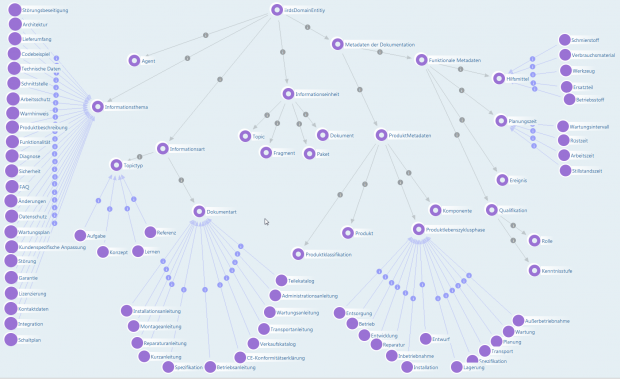Insights into iiRDS
The tekom working group "Information 4.0" develops a new delivery standard for technical documentation - iiRDS (intelligent information request and delivery standard). iiRDS defines a package format and standardized metadata, making content delivery vendor-independent.
At the 2017 tekom spring conference, Ulrike Parson and Mark Schubert will present iiRDS with concrete examples.
1 Objectives of iiRDS
iiRDS defines metadata and a delivery format for intelligent information. Intelligent information is modular and format-neutral and adapts dynamically to application context. It can be queried and be displayed on various devices.
To create intelligent information, we need metadata so that we can get targeted access to individual information modules. Because most metadata is company-specific, iiRDS focuses on metadata about the information itself and provides docking points only for product-specific and variant-defining metadata that are usually defined by companies. The standardized package format of iiRDS enables delivery of intelligent information to a server or application.
2 Components of iiRDS
2.1 Metadata Definition
iiRDS defines metadata in the modeling language RDF Schema. The iiRDS schema describes relevant resources for technical documentation and their relations . Thus, the iiRDS schema can be considered a simple ontology.
These are the basic resources of the iiRDS schema:
- Central resource is the InformationUnit: a package, a document, a topic, or a fragment within a topic.
- Documents and topics have types. Example: Operating instructions and task.
- Each InformationUnit has additional functional metadata and product metadata. Examples: required tools, maintenance intervals, events, product variants and features.
2.2 Package Format
An iiRDS package is a container with a given directory structure. The container contains files of the information product, as well as an RDF file with the metadata about the information product.
3 iiRDS Applied
During our presentation, we’ll explain details of the standard and also show an example about how to mark contents with iiRDS metadata. This way, you will get insights into the iiRDS ontology. We’ll put this theoretical standard into practice by marking XML content with iiRDS metadata. You will see how metadata makes the content more accessible to the user.
Find all information on the presentation at the tekom spring meeting here.
Ulrike Parson, CEO of parson AG, is a member of the Information 4.0 tekom working group and speaker of the modelling subgroup.
Mark Schubert, Technical Consultant at parson AG, is a specialist in XML-based documentation and knowledge modeling. He is a member of the iiRDS modeling subgroup.

